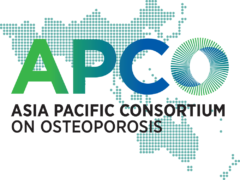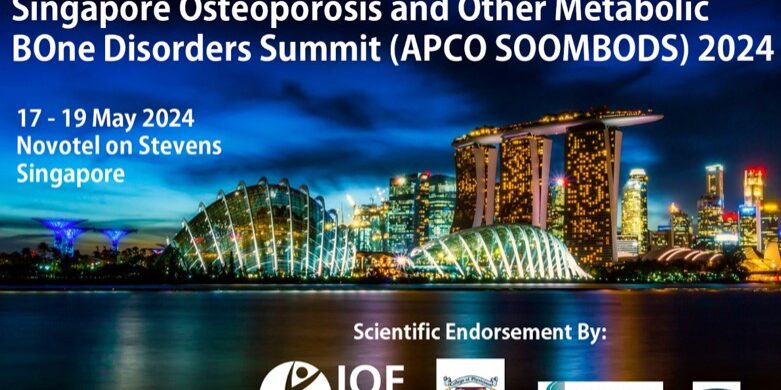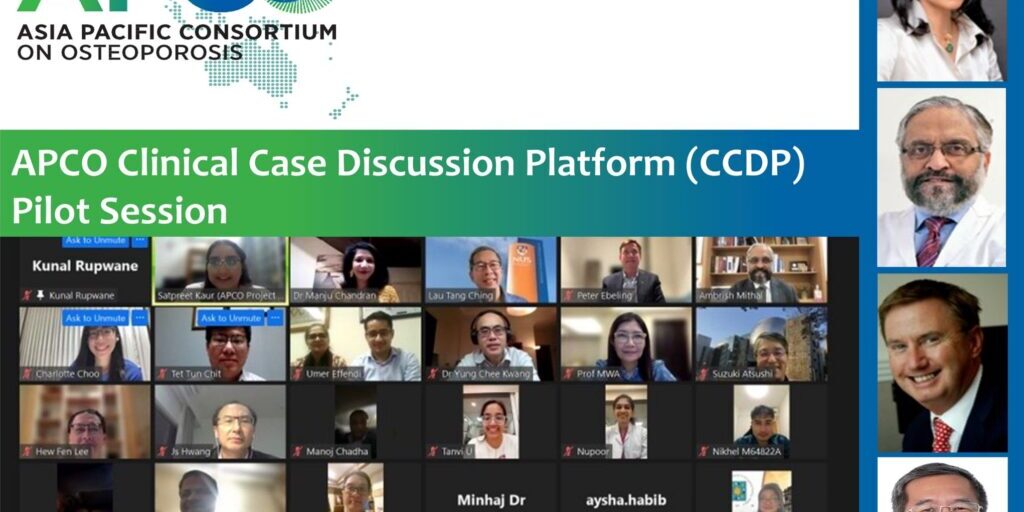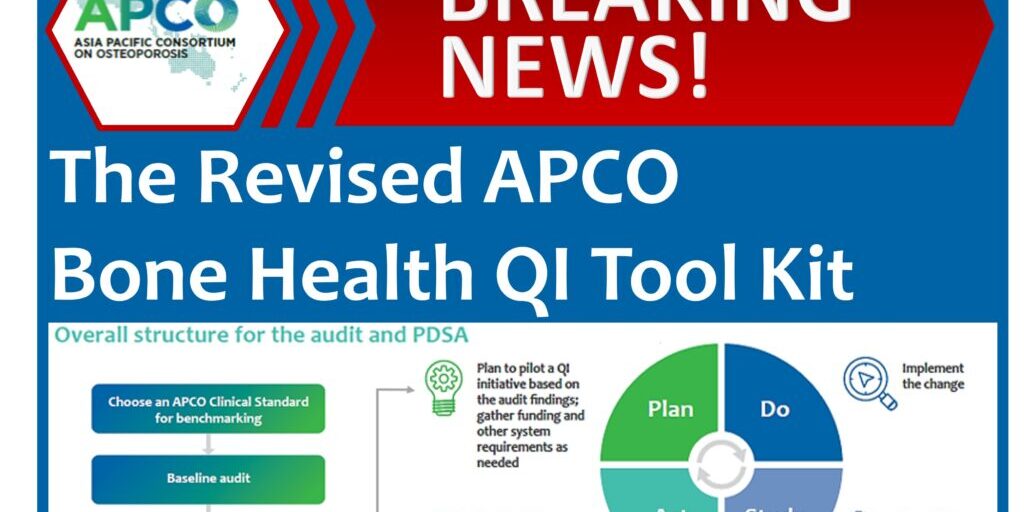Launch of first pan-Asia Pacific minimum clinical standards for the screening, diagnosis & management of osteoporosis
The Asia Pacific Consortium on Osteoporosis (APCO) has today (Thursday, January 28, 2021) launched the first pan-Asia Pacific clinical practice standards for the screening, diagnosis, and management of osteoporosis, targeting a broad range of high-risk groups.
Published in Osteoporosis International today, ‘The APCO Framework’ comprises 16 minimum clinical standards set to serve as a benchmark for the provision of optimal osteoporosis care in the region.
Developed by APCO members representing key osteoporosis stakeholders, and multiple medical and surgical specialities, this set of clear, concise, relevant and pragmatic clinical standards aims to support national societies, guidelines development authorities, and health care policy makers with the development of new guidelines, and to encourage the revision of existing guidelines.
According to the Framework lead author, APCO Chairperson, and Director of the Osteoporosis and Bone Metabolism Unit at Singapore General Hospital, Dr Manju Chandran, Singapore, APCO employed a 5IQ analysis and the well-established Delphi Consensus process to analyse the 18 clinical practice guidelines currently available in the Asia Pacific region, to inform the development of The APCO Framework.
“Utilising a comprehensive, four-round Delphi consensus method enabled our APCO members who work in vastly different health care systems, to reach a remarkable level of consensus on a benchmark set of clinical standards for the provision of quality osteoporosis care for the Asia Pacific region.”
The APCO Framework offers clinicians structured, well-articulated, and readily accessible clinical practice guidelines that define:
- Individuals to be identified for assessment;
- Investigations required;
- Relevant indications for treatment;
- Appropriate selection of interventions to be made;
- The guidance and information patients need for self-care;
- Integration of healthcare systems for optimal provision of care; and
- The need, and methods for monitoring and improving the quality of osteoporosis care.
“Implementation of The APCO Framework, or a similar set of standards of care informed by the Framework, is expected to significantly reduce the burden of osteoporosis not only in the Asia Pacific region, but also worldwide. We hope that the Framework can serve as a stimulus for harmonisation of guidelines in other regions that have similar socio-econominc diversity and heterogeneity of health care resources,” Dr Chandran said.
Globally, the population aged 65 years or over increased from six per cent in 1990, to nine per cent in 2019. This proportion is projected to rise to 16 per cent by 2050, meaning one in six people worldwide will be aged 65 years or over by 2050. The number of people aged 60 years and over in the Asia-Pacific region – home to more than a third of the world’s population aged 65 years and over, and to more elderly people than any other region – is predicted to triple between 2010 and 2050, reaching a staggering 1.3 billion people.
Osteoporotic fractures among Asia-Pacific populations are expected to increase exponentially, not only because of the region’s rapidly aging population, but also due to mounting urbanisation, and the subsequent increase in sedentary lifestyles.
Despite the presence of generally safe and effective treatments for osteoporosis, as many as five in six patients presenting to their primary care physician (PCP), or to a hospital with a fragility fracture, will not be assessed for osteoporosis, nor appropriately managed to prevent further fracture.
According to Medical Director of Osteoporosis Australia, and APCO Executive Committee member, Professor Peter Ebeling AO, Australia, as many as half of those who have sustained a hip fracture, have already experienced a previous fracture at other skeletal sites.
“In fact, a prior fracture at any site is associated with a doubling of future fracture and mortality risk.
“The unfortunate ramifications of the gross under-diagnosis and under-treatment of osteoporosis is that a large number of people sustain further debilitating secondary fractures, which places a substantial, but importantly, preventable burden on already strained healthcare systems,” said Prof Ebeling.
A fragility fracture, which occurs every three seconds worldwide, compromises quality of life and loss of independence. Concerningly, one-in-four patients who sustain a hip fracture die within a year, and less than half of those who survive, regain their previous level of function. In 2010, an estimated 158 million people aged 50 years and above were at high risk for osteoporotic fracture – a figure which is set to double by 2040.
According to International Osteoporosis Foundation (IOF) CEO and APCO Executive Committee member, Dr Philippe Halbout, Switzerland, these alarming statistics, coupled with the anticipated, exponential rise in osteoporotic fractures among Asia-Pacific populations, warrant a standardised set of minimum clinical standards for the region.
“Anecdotal evidence to date reveals significant inconsistencies in osteoporosis clinical practice guidelines in the Asia Pacific region, which vary widely in scope and recommendations. This was confirmed when we analysed the 18 guidelines.
“Implementation of the minimum clinical standards proposed by The APCO Framework, and reform of existing guidelines, will support clinical improvement initiatives, while also paving the way for a more holistic approach to osteoporosis care, and ultimately, greater consistency across all national and regional clinical practice guidelines in the region,” Dr Halbout said.
To download or access The APCO Framework, head to www.apcobonehealth.org/apco-framework
To learn more, visit www.apcobonehealth.org or follow APCO on LinkedIn: asia-pacific-consortium-on-osteoporosis
About APCO
The Asia Pacific Consortium on Osteoporosis (APCO) comprises osteoporosis experts from several countries and regions in the Asia Pacific, charged with developing tangible solutions to the substantive challenges involving osteoporosis management and fracture prevention in this most populated and fastest growing part of the world. APCO’s mission is to engage with relevant stakeholders, including healthcare providers, policy makers and the public, to help develop and implement country and region-specific programs for the prevention and treatment of osteoporosis, and its complication of fragility fractures, in the Asia Pacific.
About IOF
The International Osteoporosis Foundation (IOF) is the world’s largest non-governmental organisation dedicated to the prevention, diagnosis and treatment of osteoporosis and related musculoskeletal diseases. IOF’s mission is to promote bone and musculoskeletal health as a worldwide priority.
The 5IQ analysis and Delphi consensus process
The 5IQ exercise assessed the extent of disparity when comparing the national guidelines currently available throughout the Asia Pacific region.
The Delphi technique (a structured communication technique using a systematic, interactive forecasting method reliant upon an expert panel) was employed to achieve APCO member consensus for the development of clinical standards of care.






